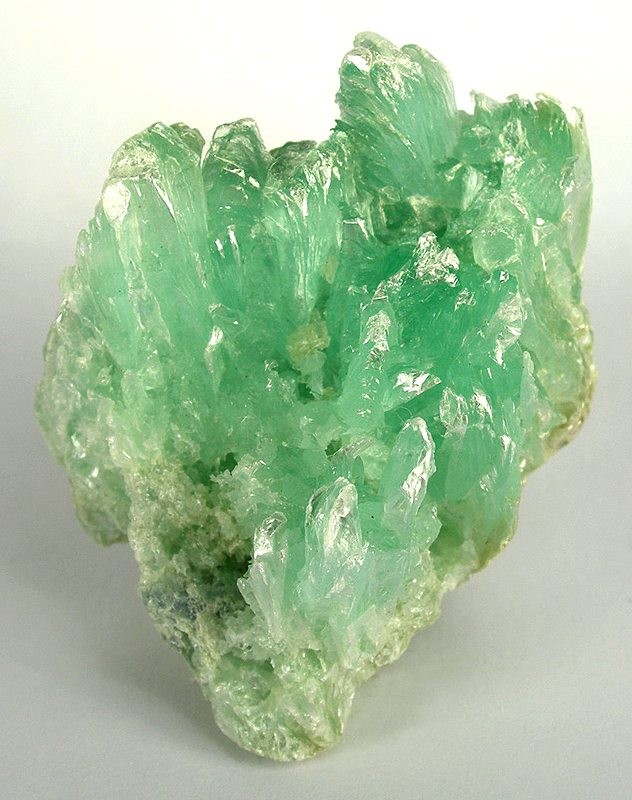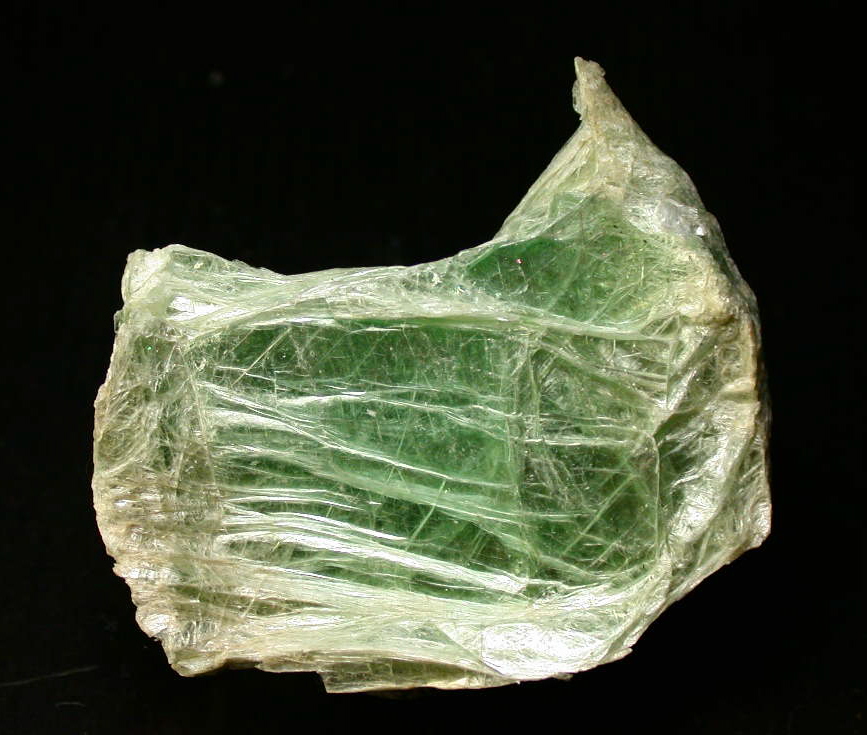Talc
Although in over 200 years scientists have naturally discovered some minerals that can be slightly softer, the serpentine mineral talc is still considered the standard for softness, with its usual 1 Mohs hardness score. Because it’s so soft, it won’t surprise you to hear that talc is used to make baby powder to protect soft skin. And part of how it provides that protection is that it’s “hydrophobic,” which means it basically doesn’t like water (or other water-like liquids) and repels it. Along with being soft, it can also be pretty slippery, so it’s used in industrial lubricants to keep machinery running smoothly. It also has properties that make it helpful in making ceramics and stoneware. As with other types of serpentine, talc can occur in different varieties and colors. In its soft variety, it can be white, or gray, or pale blue-green, or it can be deep green and translucent, almost like a gemstone. It is also the main ingredient in a harder rock called soapstone, which is easy to cut and carve and has been used to make sinks (as in kitchen) and, because it can take the heat, even woodstoves. You’ll find talc in metamorphic rocks that have lots of magnesium in them, usually along with other serpentine minerals, such as asbestos, antigorite, and lizardite, and amphibole minerals like actinolite and tremolite.
| Formula | Group or Type | Shape | Hardness | Specific Gravity | Streak | Luster |
|---|---|---|---|---|---|---|
| Mg3Si4O10(OH)2 | — | Monoclinic | 1 | 2.7–2.8 | White | Resinous to waxy |


